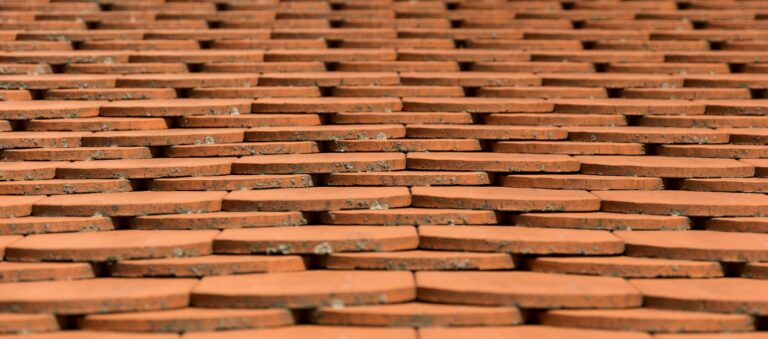
Table of Contents
When was the last time you considered the state of your roof? For most homeowners, it will be when there was a problem, either when it started raining indoors or they saw a stack of their roof tiles landing in the neighbour's garden.
Our roofs perform an essential task, protecting our homes from the worst effects of the weather year after year. But, eventually, they wear out or fail us during a storm, which is when we usually panic and try to find someone to fix the problem urgently.
The thing is, our roofs deserve better treatment. After all, it makes perfect sense to choose the best materials in the first place and to ensure that they are properly maintained.
However, there are several different types available, so how do we know which roofing material is best?
Maybe you've discovered that you need a new roof and you're asking this very question.
Well, that's exactly what we're here to find out!
Thankfully, we've come a long way in the last century when it comes to roofing materials.
Although traditional methods and materials are still used, and some are still very useful, there's a lot more choice these days.
Let's look at some of the popular roofing materials currently used today along with their pros and cons:
Also known as bitumen shingles (mostly in Europe), asphalt shingle roofs are a popular choice across the UK. This is mostly because they are cheaper (initially) and quicker to install than many other options.
Installation is straightforward enough that a skilled DIY enthusiast can easily cope with it, which is one reason why asphalt shingles are so popular, as this reduces costs even further. They are very similar to the asphalt used on shed roofs.
Another plus is that they come in a huge range of colours and styles that look great on all kinds of homes, from traditional to contemporary architectural designs.
However, they do have their negative points:
Few asphalt shingles are recycled after use and they are made using petroleum, so they are not a very sustainable choice compared with other options.
Asphalt shingle roofs must be inspected and maintained frequently to keep them in working order. While replacing damaged shingles is fairly easy, it's not always cheap to do so.
Strong winds can dislodge or tear them pretty easily, and they are prone to damage by rodents and other animals. They are also not very fire resistant.
An asphalt shingle roof will last for about 15 to 20 years, after which it will need extensive repair or replacement.
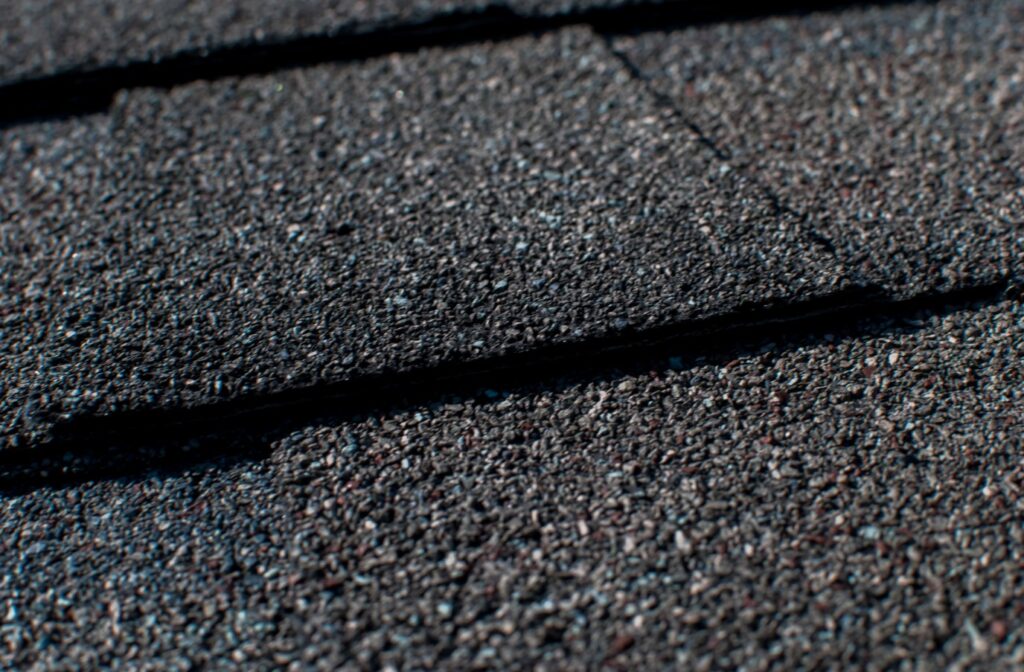
If you're looking for an environmentally sustainable solution, a metal roof may be the answer. Most are produced using recycled materials and are themselves 100% recyclable!
Metal roofing materials include:
The advantages of a metal roof are clear:
Metal roofs are incredibly durable, withstanding the worst that wind, rain and rodents can throw at them! They are also highly fire-resistant.
These beautiful-looking roofing materials can last for at least 50 years and more, probably up to about 75 years. With a little maintenance, some will last beyond a century.
As already mentioned, they are often produced from 100% recycled materials and are almost always recycled once they are removed.
A quick inspection once in a while is all that's required to make sure all is well.
A standing seam metal roof offers unrivalled protection against leaks. Essentially, the joint between the metal panels is raised and hidden, creating an appealing effect and leak-free seal.
The standing seam system is used widely on prestige new builds as it looks amazing and provides the very best protection.
So, are there any downsides to metal roofing?
Well, yes, there is, and it's a big problem for many people: it costs significantly more than most other roof materials, especially if you opt for a standing seam metal roof.
While this may put many homeowners off the idea, when you consider the long-term benefits, it's well worth the cost - if your budget allows.
Concrete roof tiles have earned a reputation among roofing experts for being inferior. However, they have improved over the past two decades due to technical advances and have experienced something of a surge in popularity.
Even so, to enjoy the benefits it's wise to pay more for the better quality tiles as the cheaper examples don't look as good and won't last as long. If you're prepared to pay for them, you can find great-looking concrete tiles that resemble slate and wood shingles!
Let's look at the positives:
Concrete roof tiles are tough! They can withstand temperature variations better than clay tiles and have better impact resistance. This means they can cope with light knocks and bumps of tree branches, but they are not indestructible!
They will also handle cold weather better without shattering, unlike clay tiles.
The average concrete tiled roof will last between 35 and 50 years and still look great due to the fact that there are no variations in colour tone or texture. However, some (cheaper ones especially) may fade after a while.
These individual tiles are available in sets that clip together, fixing them into place securely and quickly. A great innovation for keeping the cost of installation down!
Because they are so durable they won't need much looking after. They just require cleaning now and again to get rid of algae, moss and mildew.
On the negative side, they are heavier than most other roofing materials, so you need to have your roof structure inspected to determine whether it will take the weight. If not, your roof will need reinforcing which incurs extra costs, or you'll need to consider an alternative.
These tiles also absorb water, making discolouration more likely as mould and mildew form.
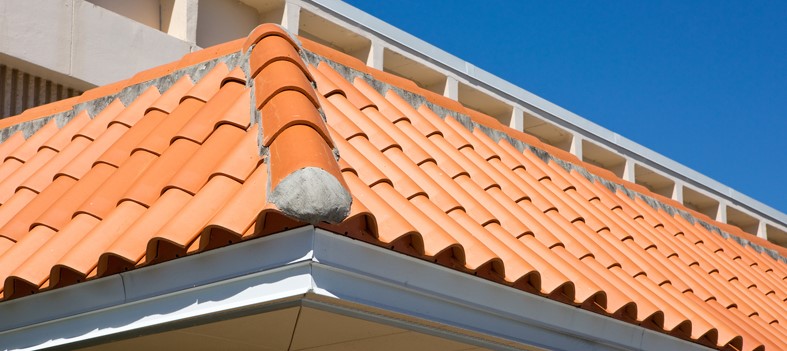
Natural slate is a beautiful roofing material when used in the right setting. Slate tiles are one of the most sustainable materials in terms of durability as they can last well beyond a century with proper maintenance.
In all probability, your roof structure and underlay will not last as long as the slate tiles sitting on it!
Slate was once widely mined or quarried in the UK and used extensively in house building. Only a handful of quarries exist today, mostly confined to Cumbria, Wales, and Cornwall.
This once-common material has become a luxury these days, making it one of the most expensive roofing material options available.
Although it is excellent at withstanding the elements, slate is vulnerable to pressure. If a repair is required it is essential that no weight is put directly on the tiles or they may crack.
All in all, while slate roofing looks amazing, its high cost can be offputting - on average it costs around five times more than other materials.
This method uses the beauty of natural wood to its best effect, creating a stunning range of colours and designs as the wood matures.
Cedar is widely used because it offers such an aesthetically pleasing texture and colour, as well as being a good insulator that keeps your home cooler in summer and warm in winter.
In addition to providing excellent thermal insulation, this natural material is relatively easy to handle, making installation fairly quick and easy.
Cedar shingles are low in density, meaning that there is minimal shrinkage compared to other woods. They weather to a pleasing silver-grey hue, though they can be stained to a colour of your choice if you prefer. Speaking of weathering, cedar shingles are durable and weather-resistant, providing protection for as long as 50 years.
They are also considered an eco-friendly material as they are natural and organic.
Wood shingles are thin wedges that are sawn to an identical shape and nailed in place to form an overlapping waterproof surface. Wood shakes are similar but they are thicker and more rustic, with one unfinished side. Shakes proved better insulation but as they are heavier and thicker the installation process is longer, which adds to the overall cost.
So, what are the cons?
If the roof is not installed perfectly it may fail after a few years. There's a knack to doing this that only a professional roofer who has handled this material knows about.
Also, wood shingles are hand-cut, and this all adds up to an expensive option.
To ensure its durability, a wood shingle roof needs careful, regular maintenance as it is susceptible to mould, rot and insect infestations. However, cedar does have natural anti-rot and insect repellant qualities and this can be increased using chemical treatments.
As with all wood, fire is an ever-present risk. Even so, fire-resistant treatments can be applied to the shingles in order to reduce the risk. We should also keep in mind that most of the studies connecting wood shingles with fire risk are focused on homes in hot climates in the US rather than the mixed (and often wet!) weather here in the UK.
If you have the space to do this, it's a great way to boost your sustainability and lead a greener life.
First, in case you're unsure, let's explain exactly what green roofs are. Essentially, they are gardens placed on a reinforced roof structure!
They have many positive points in their favour:
That all sounds great, but there must be a downside?
In fact, there are three negatives that we must acknowledge:
However, if you can handle this they're a great option for all the reasons listed earlier.
Many experts suggest that these are going to be the roofing material of choice in the near future. It's difficult to disagree when you look at the improvements that have been made in such a short time.
Modern composite shingles are constructed of a combination of materials such as recycled paper, asphalt, plastics and fibreglass. This makes them lightweight and durable and allows for a vast range of textures, colours and designs. Some of these mirror the look of natural materials very well.
In fact, they are made so well these days that it's not easy to tell the difference between these and slate roofing or pantiles!
Let's examine more of the positives:
Many of the materials included in these tiles would be otherwise dumped in a landfill site, making them a great choice for environmentally conscious homeowners.
Because they are lightweight, easy to handle and don't require pre-drilling, sorting or clipping, installation is relatively quick and hassle-free. This, as well as the lower cost of each tile, makes them an attractive choice for anyone with a limited budget.
You can expect your composite shingles to last in excess of 40 years, with little to no maintenance required.
Unlike traditional roofing materials, these tiles are designed to be immensely strong, despite being lightweight (around 80% lighter than a slate roof). Aside from driving down the delivery cost, you can be sure that there will be no breakages during the journey, which is often a risk with slate roofing materials and clay tiles.
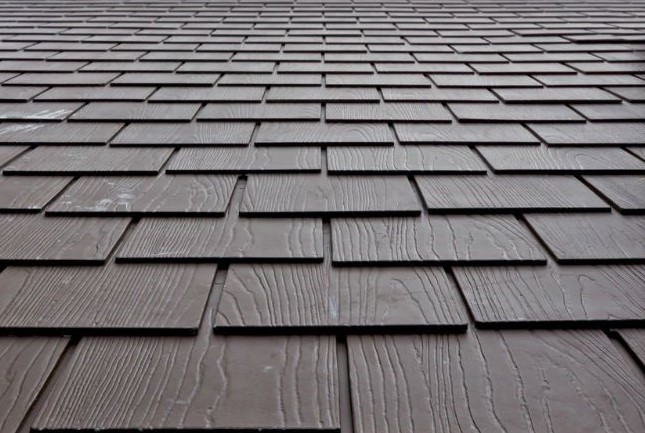
Clay tiles have been in use for at least two thousand years in many parts of the world, and are still popular today. This is partly because they look beautiful, but also because they are natural and relatively eco-friendly.
They have a warmer tone than a slate roof, evoking a Mediterranean atmosphere.
They also have several benefits:
However, we inevitably come to the cons:
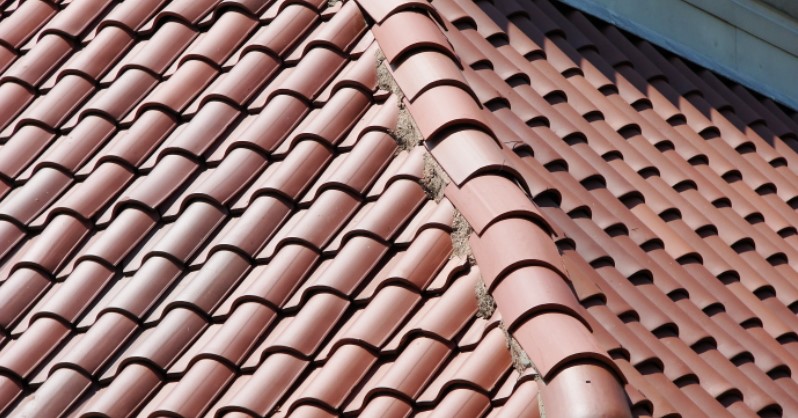
Most residential houses in the UK have pitched roofs, although there are plenty with flat roofs, especially among new builds or privately commissioned homes.
Still, you're more likely to see these in commercial buildings or on extensions.
Flat roofs have earned themselves a reputation for being unreliable, which may once have been justified. However, technological advances in the materials and methods used have improved this type of roof immensely.
Incidentally, flat roofs are ideal for solar panels as they can be angled for maximum effect.
We've compared the different types of roofing materials, so which is best?
The truth is that the answer hinges on your budget to a greater extent, but overall, it's always best to go for the most cost-effective option, even if that means going to the very top of your budget.
From what we've seen, metal seems the best overall roofing material. This type of material is energy efficient, eco-friendly, incredibly durable, low-maintenance, and cope with high winds.
However, it's difficult to ignore the high price tag.
With this in mind, perhaps composite shingles should take first place? Considering they offer many advantages and they are much more affordable, these offer a common-sense option for most homeowners.
Finally, it only remains to be said that no matter which type of roof you choose, the end result will only be as good as the roofing contractor you hire to install it. Choose wisely, check out references and reviews, and compare quotes.
Only use a contractor you trust 100% and who offers you a cost-effective solution.